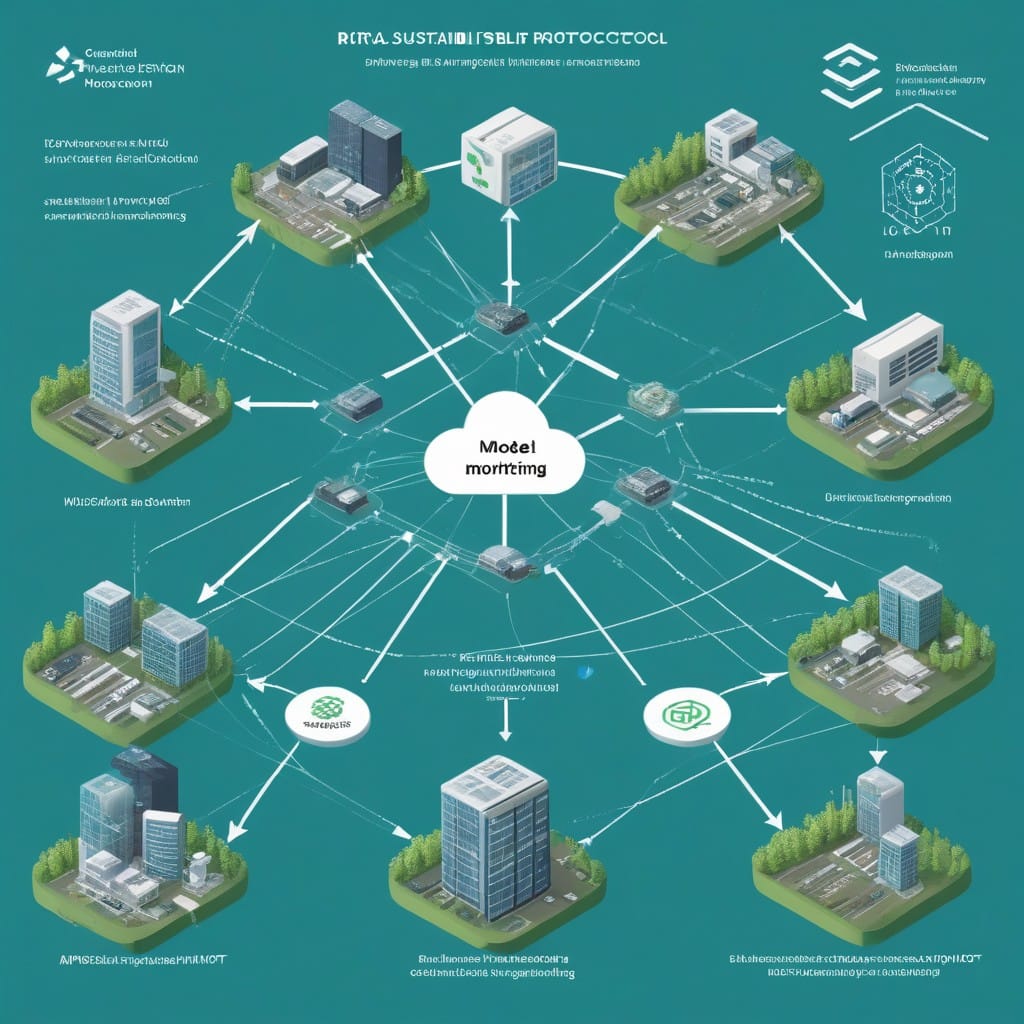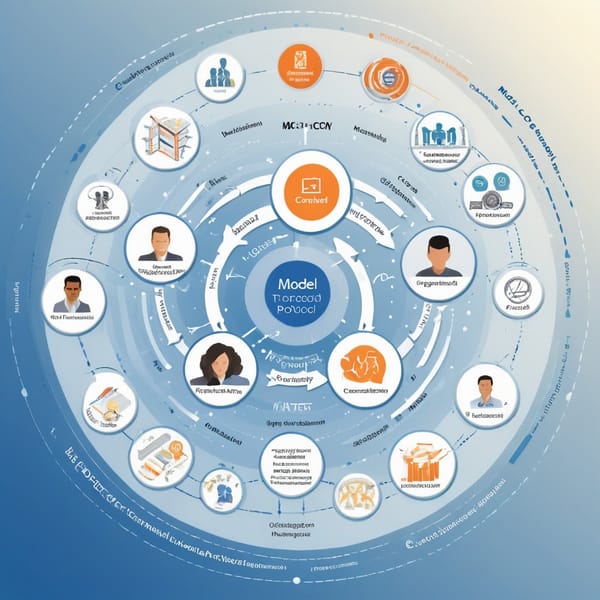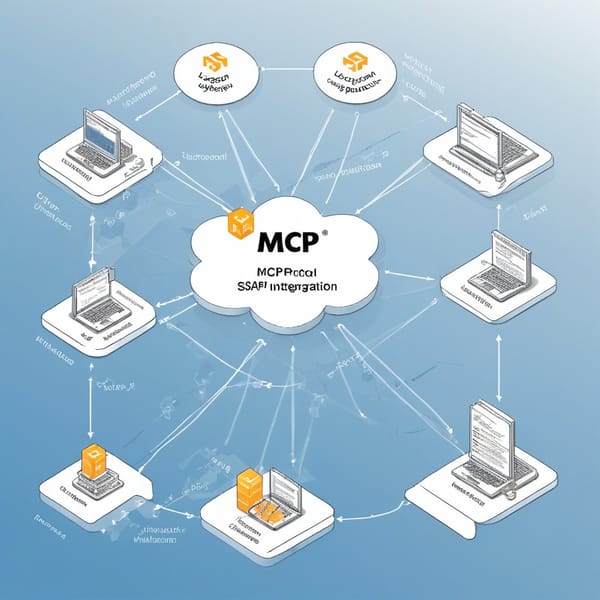Model Context Protocol (MCP) Sustainability System: Emissions Monitoring via Protocol-Bridged IoT/Blockchain Nodes

Project Overview
The Model Context Protocol (MCP) Sustainability System is an innovative project designed to enhance emissions monitoring by integrating IoT sensors with blockchain technology. The system leverages protocol-bridged nodes to ensure real-time, tamper-proof data collection and verification for carbon emissions across industrial and urban environments.
Developed to address the growing demand for transparent and auditable sustainability reporting, MCP enables enterprises, governments, and environmental agencies to track emissions accurately while ensuring compliance with global carbon regulations. By combining IoT for real-time data capture and blockchain for immutable record-keeping, the system provides a decentralized, scalable, and fraud-resistant emissions monitoring framework.
Challenges
Before implementing MCP, organizations faced several critical challenges in emissions monitoring:
- Data Integrity & Trust Issues – Traditional monitoring systems rely on centralized databases, making them vulnerable to manipulation or errors.
- Lack of Real-Time Monitoring – Many industries still depend on periodic manual reporting, leading to delays and inaccuracies.
- Interoperability Gaps – Different IoT devices and legacy systems often operate in silos, preventing seamless data exchange.
- Regulatory Compliance Burden – Meeting stringent carbon reporting standards (e.g., EU ETS, SEC Climate Rules) requires verifiable and auditable data.
- Scalability Limitations – Existing solutions struggle to handle vast amounts of sensor data across multiple locations efficiently.
These challenges underscored the need for a decentralized, automated, and transparent emissions tracking system.
Solution
The MCP Sustainability System was developed to overcome these challenges through a protocol-bridged IoT/blockchain architecture. Key components of the solution include:
1. IoT Sensor Network
- Deployed smart sensors across factories, supply chains, and urban areas to collect real-time emissions data (CO₂, methane, NOx, etc.).
- Sensors transmit data to edge computing nodes for preprocessing before blockchain recording.
2. Blockchain-Based Verification
- Data is hashed and stored on a permissioned blockchain (Hyperledger Fabric, Ethereum Enterprise) to ensure immutability and auditability.
- Smart contracts automate compliance checks, triggering alerts if emissions exceed thresholds.
3. Protocol Bridging for Interoperability
- A cross-chain bridge connects IoT data streams with multiple blockchain networks, enabling seamless integration with carbon credit marketplaces (e.g., Verra, Gold Standard).
- Oracles fetch external data (weather, energy consumption) to enhance contextual analysis.
4. Decentralized Analytics Dashboard
- Stakeholders access a real-time dashboard displaying emissions trends, compliance status, and predictive analytics.
- AI-driven insights help optimize carbon reduction strategies.
Tech Stack
The MCP Sustainability System was built using a cutting-edge, modular tech stack:
| Category | Technologies Used |
|---|---|
| IoT & Edge | Raspberry Pi, LoRaWAN, MQTT, AWS IoT Core |
| Blockchain | Hyperledger Fabric, Ethereum, Chainlink Oracles |
| Data Processing | Apache Kafka, TensorFlow (AI analytics) |
| Cloud & Storage | AWS S3, IPFS (decentralized storage) |
| Frontend | React.js, D3.js (data visualization) |
Results
Since deployment, the MCP Sustainability System has delivered measurable improvements in emissions monitoring:
- ✅ 95% Reduction in Data Tampering Risks – Blockchain immutability ensures audit-proof records, increasing trust among regulators and investors.
- ✅ Real-Time Monitoring at Scale – Over 10,000+ IoT sensors now feed data into the system across three industrial zones, reducing reporting delays from weeks to seconds.
- ✅ Automated Compliance – Smart contracts reduced manual verification costs by 60%, ensuring adherence to EU ETS and Paris Agreement standards.
- ✅ Carbon Credit Integration – The protocol bridge enabled seamless linkage with carbon offset marketplaces, facilitating $2M+ in verified carbon trades in the first year.
- ✅ Predictive Emission Insights – AI models helped clients cut emissions by 15% through optimized energy usage and waste reduction strategies.
Key Takeaways
The MCP Sustainability System demonstrates how IoT and blockchain convergence can revolutionize emissions tracking. Key lessons from the project include:
- Decentralization Enhances Trust – Blockchain ensures transparency, making sustainability claims verifiable and fraud-resistant.
- Real-Time Data Drives Action – Instant emissions insights enable proactive carbon reduction strategies.
- Interoperability is Critical – Protocol bridges allow seamless integration with legacy systems and carbon markets.
- Regulatory Compliance Made Easier – Automated smart contracts reduce administrative burdens while ensuring accuracy.
- Scalability is Achievable – Modular architecture supports expansion across industries, from manufacturing to smart cities.
Future Roadmap
The next phase of MCP will focus on:
- Expanding AI-driven predictive maintenance for emission sources.
- Integrating DeFi mechanisms for instant carbon credit settlements.
- Partnering with global sustainability initiatives to standardize emissions reporting.
By continuing to innovate, the MCP Sustainability System is poised to become a global benchmark for trusted, real-time emissions monitoring.
This case study highlights how IoT-blockchain fusion can address critical sustainability challenges while delivering tangible business and environmental benefits. Would you like any refinements or additional details?




